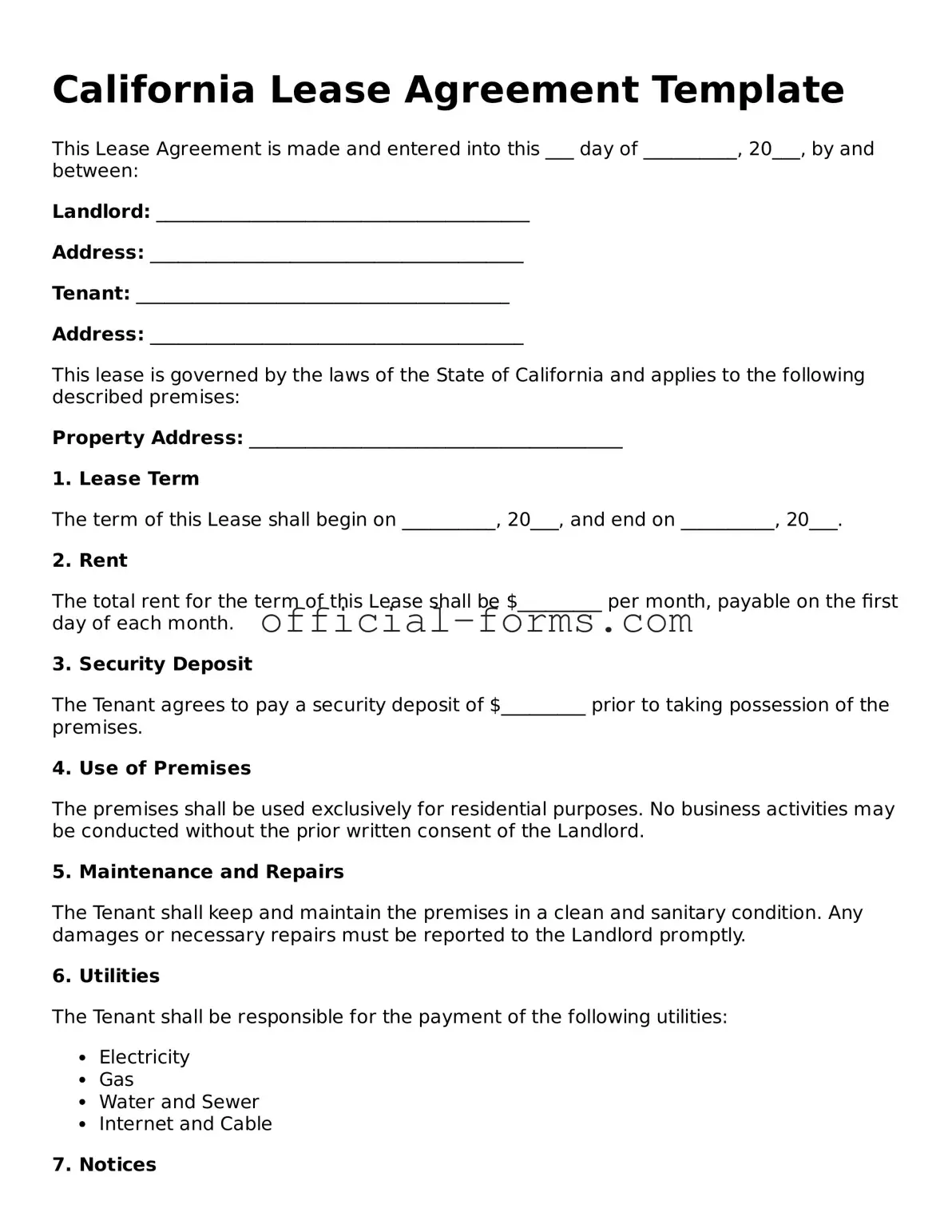Filling out the California Lease Agreement form can be a straightforward process, but many individuals make common mistakes that can lead to complications down the line. One frequent error is failing to provide accurate personal information. Landlords and tenants must ensure that names, addresses, and contact details are correct. Mistakes in this section can create confusion and complicate communication.
Another common mistake is neglecting to specify the lease term. The lease term outlines the duration of the agreement, whether it’s month-to-month or a fixed term. Omitting this detail can lead to misunderstandings regarding when the lease begins and ends.
Many people also overlook the importance of detailing the rent amount. It is essential to clearly state the monthly rent and any additional fees. Without this information, disputes may arise over payment expectations.
Security deposits often cause confusion as well. Some individuals forget to include the amount of the security deposit in the agreement. California law has specific regulations regarding security deposits, so it’s crucial to document this information accurately.
Another mistake involves failing to outline maintenance responsibilities. The lease should specify who is responsible for repairs and maintenance. Without this clarity, both landlords and tenants may find themselves at odds over property upkeep.
Some tenants and landlords neglect to include provisions for early termination. It’s important to address what happens if either party wishes to end the lease early. This can prevent legal issues later if circumstances change unexpectedly.
People often forget to include pet policies in the lease. If pets are allowed, the agreement should specify any restrictions or additional fees. Not addressing this can lead to disputes if a tenant brings in a pet without prior approval.
Another common oversight is not including the right to enter the property. Landlords must outline their rights to access the rental unit for inspections or repairs. Clarity in this area helps maintain a good landlord-tenant relationship.
In addition, individuals sometimes fail to understand the implications of signing the lease. Both parties should read and comprehend all terms before signing. Signing without understanding can lead to unintended obligations.
Lastly, people often neglect to keep a copy of the signed lease. It is vital for both parties to retain a copy for their records. This ensures that everyone is aware of their rights and responsibilities throughout the lease term.
